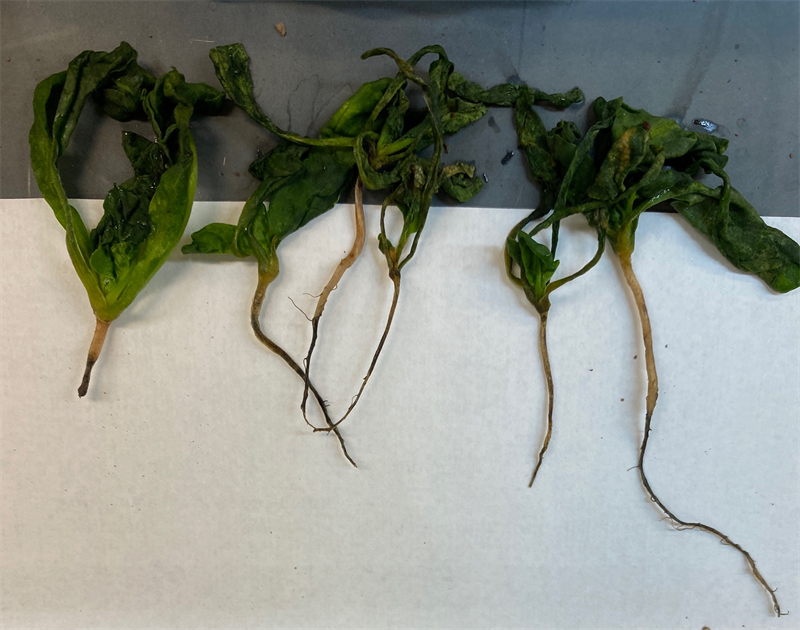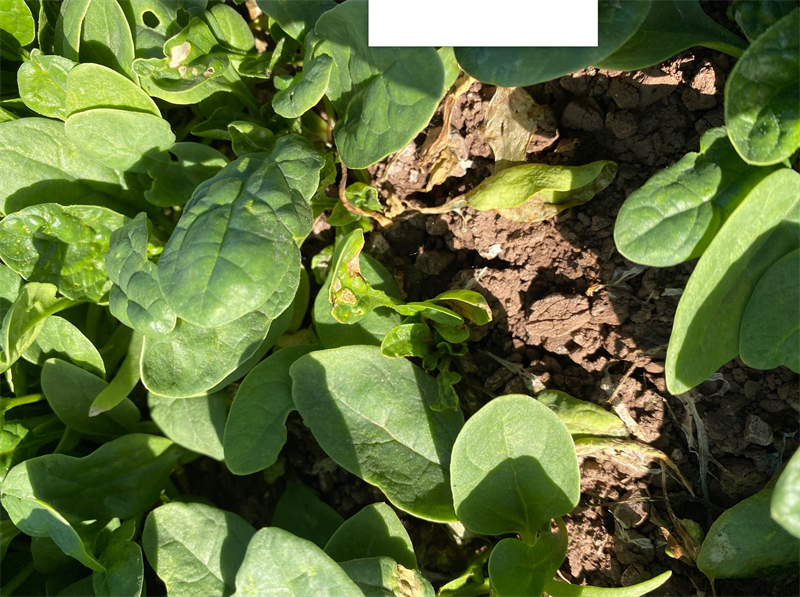Nov 11, 2020
Damping Off in Spinach
Damping off is a common problem in spinach. This season we have observed the occurrence of the disease from Imperial valley, to Yuma and all the way to Wellton.
Symptoms of damping‑off and root rot consist of poor seed germination, preemergence death of seedlings, postemergence death of newly emerged seedlings, stunted plants, yellowed lower leaves, general poor growth, wilting, and eventual collapse and death of older plants. The upper taproot may be girdled by a necrotic lesion, or the tip of the taproot may be necrotic. In severe cases, nearly all roots may be girdled or rotted off. Damping-off is problematic in spinach production areas throughout the world. Severity is influenced by cultivar, soil texture, irrigation, and pathogen populations. Severe damping-off is associated with clay or poorly draining soils with a history of frequent spinach production. While all stages of spinach can be infected by root rot organisms, newly emerging plants and young seedlings are very susceptible.
Symptoms are more prominent in areas with poor drainage. These spinach problems are caused by a complex of pathogenic soil fungi that include one or more of the following: Fusarium oxysporum, Pythium (several species), and Rhizoctonia solani. These fungi are present in most soils and can get aggressive and cause loss when the environment is favorable. However, aboveground symptoms of plants that are overwatered are similar to symptoms of root rot. Excess water can damage roots, causing tan to brown, water‑soaked symptoms on roots even if no pathogen is present.
Management
Plant spinach in well draining soils. Prepare seed beds so that even, rapid germination is enhanced. Carefully manage the irrigation schedule to prevent flooding and saturated soil conditions. Plant seed that is treated with fungicides and fumigate the beds. Preplant application of mefenoxam will only control damping-off caused by Pythium. Avoid planting consecutive spinach crops and practice good crop rotation.
Always remember the disease triangle, the necessity of a susceptible host, the favorable environment, and virulent pathogen. To create unfavorable environment avoid overwatering, do light but frequent irrigation to avoid standing water in the field, schedule watering in the morning or earlier part of the day. Addition of soil amendments to increase microbial activity can be helpful.



To contact Bindu Poudel go to:
bpoudel@email.arizona.edu










